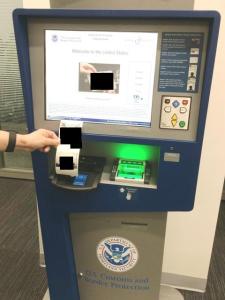If you’re thinking about taking a trip to another country this year, it might be expensive to get there, but once on foreign soil, it may be quite affordable for Americans.
The U.S. Dollar Index is near a 20-year high. The dollar closed Wednesday at 104.03, up from 89.54 a year earlier.

Despite rising airfares, the strong dollar means many currency exchange rates are better (excluding fees) and prices Americans pay for goods and services in other countries are lower.
In particular, if you haven’t traveled to Europe for a while (many of us haven’t because of the COVID-19 pandemic), you’re in for a treat. Europe is especially attractive for Americans as $1 gets you 95 euros, a level not seen since February 2017. A year ago, you would get 82 euros for $1.

The euro has lost value against the U.S. dollar as Russia’s invasion of Ukraine has increased fears that rising energy, food and other costs will hurt economic growth in the 19-country eurozone.
Be prepared
The strong dollar comes as travel rebounds after two years of the global pandemic. Despite inflation driving up the cost of airplane tickets and gas (for road trips), U.S. travelers are ready to travel again.
The flip side is that travelers can expect long lines, crowded planes and airports, delays and cancellations if spring travel is anything to go by.
The Transportation Security Administration saw nearly 2.25 million passengers travel through U.S. airport security checkpoints on May 8, nearly at 2019’s level of 2.4 million for the same day.
International passenger traffic increased 257 percent in February from a year earlier across all regions. Russia invaded Ukraine on Feb. 24, according to the International Air Transport Association. Domestic traffic rose 61 percent.
Many countries, including Italy, Jamaica and Sweden, have been re-opening their borders to international visitors in preparation for spring and summer travel. In early April, I blogged some spring travel tips.
Strong leisure travel demand reported by airlines, including the three biggest American, Delta and United, + higher airfares = strong airline revenue. But increased demand combined with staff shortages has forced some airlines to cut capacity. JetBlue and Alaska Airlines, for example, are trimming their planned summer flight schedules to mitigate the expected impact of bad weather and air traffic disruptions.
In April, airfare rose 33 percent from a year earlier, according to the federal government’s Consumer Price Index released on Wednesday. You can blame higher airfares, in part, on higher jet fuel prices, which many airlines, such as Delta and United, are passing on to customers.
Still, there appears to be no reticence yet by travelers.
“There appears to be no concerns, candidly, about any variant or the virus,” Delta CEO Ed Bastian told The Wall Street Journal. After the airline reported its “best cash sales month in Delta’s history” in March. “Everyone is ready to get past it.”
As of now, all travelers entering the United States, even U.S. citizens returning from an international vacation, must get a COVID-19 test.
And while the U.S. face mask mandate for public transportation and related hubs ended in mid-April, international airlines and other countries may have their own rules. Check with your airline and the country or countries you plan to visit before flying.
Addition: As of May 16, the European Union no longer requires face masks to be worn at airports and on airplanes as COVID-19 restrictions ease across its 27 member states. Rules, however, may vary by airline and country.








